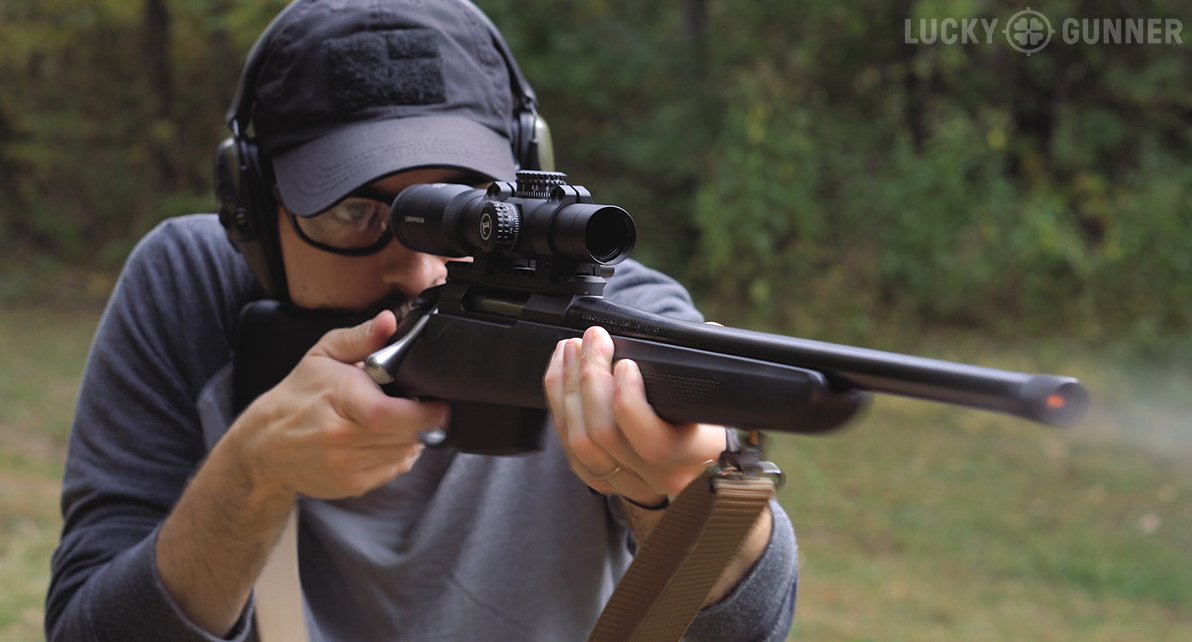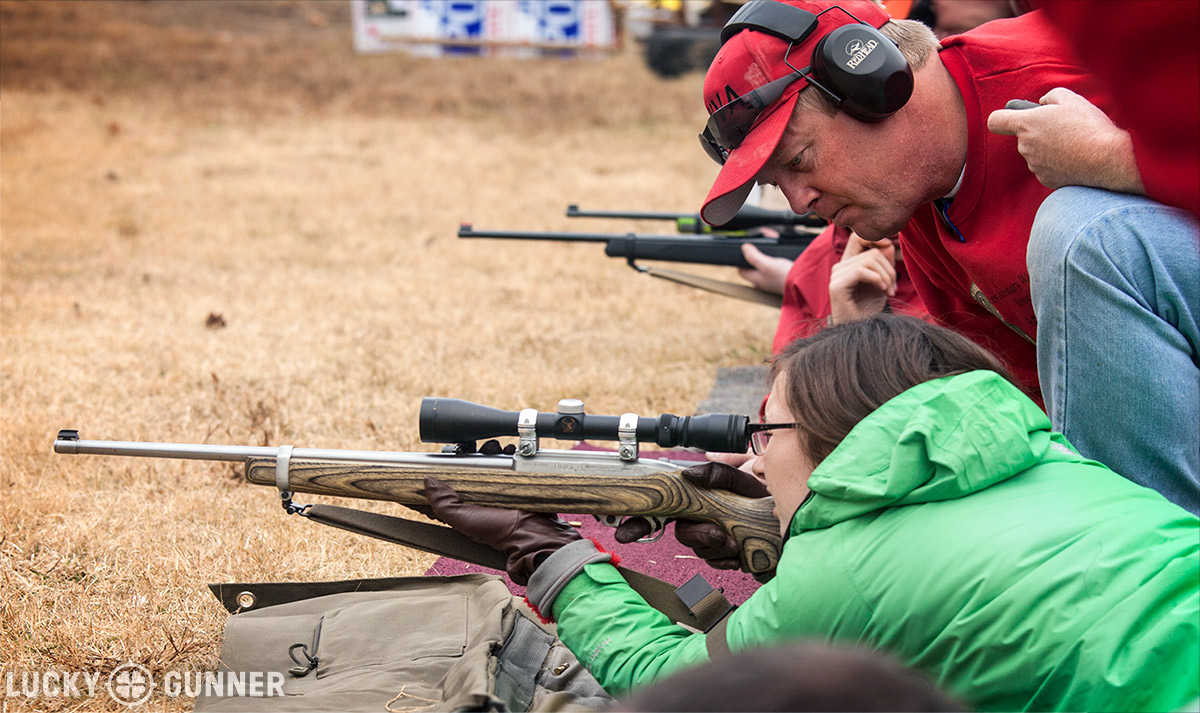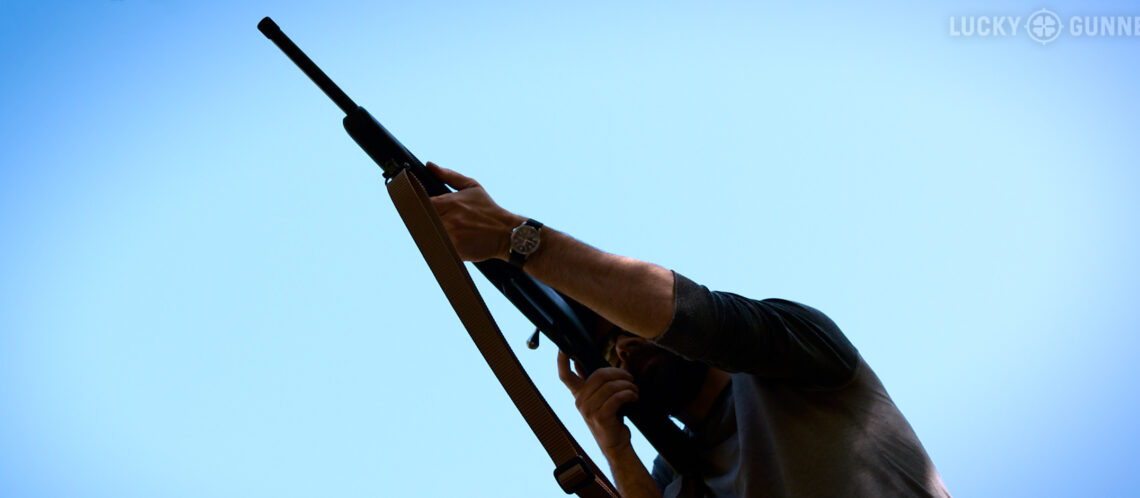A rifle is only as good as the man who carries it. As a follow-up to last week’s post on rethinking the scout rifle, today I’m taking a look at a few of the key skills necessary to become a well-rounded rifle shooter. Watch the video below for details, or keep scrolling for the transcript.
Video transcript:
On May 19, 1984, two helicopters carrying Alaska State Troopers embarked on a manhunt in the wilderness near the remote town of Manley Hot Springs. Their target was Michael Allen Silka, an outsider suspected of the recent murders of six nearby residents. When one of the helicopters descended in front of Silka’s position near a river bank, he was ready for them. He moved toward the hovering chopper and fired a round from his Ruger No. 1 single shot rifle. The .30-06 bullet narrowly missed the troopers and passed through the roof of the chopper. Immediately, two of the troopers answered with bursts of fire from their M16A1s, but none of their bullets found the target. Silka fired a second shot, which instantly killed Trooper Troy Duncan and injured Captain Don Lawrence. At the same time, Trooper Jeff Hall fired another burst, hitting Silka with eight rounds and killing him. According to Hall, the entire exchange lasted about two seconds. [A more detailed account of this encounter can be found in this article written by Jeff Hall himself]
This story gives us two examples of how skill with a rifle matters a lot more than the rifle itself. Michael Silka was a deranged lunatic but he was also a very skilled marksman. Two rounds in two seconds on a moving target with a single shot rifle requires some serious ability. Fortunately, Jeff Hall also had some serious ability, including extensive and recent experience with shooting from moving helicopters, otherwise that encounter may have gone a lot worse for the troopers. Whether you have a state of the art combat rifle or a simple deer rifle, it’s the ability of the rifleman that determines how useful that tool is.
Last week, we looked at general purpose rifles like scout rifles and other handy, lightweight bolt actions that are often called practical rifles. These are rifles that can be used for a variety of different types of hunting, they can be easily carried for long periods of time, and they can even be used for self-defense from human attackers if necessary. They are legal in all 50 states and don’t tend to draw the kind of negative attention that semi-autos do in a lot of places. Just… don’t take one with you to get coffee.
Learning to run these kinds of rifles to their full potential is becoming kind of a lost art. Most of the rifle training and competition shooting you’ll find is geared toward long range precision with large, heavy rifles or close quarters work with semi-automatic carbines. The most basic marksmanship fundamentals like trigger control and sight alignment and breathing, that’s stuff you can still learn in a lot of places, so that’s not really what I’m getting into today. I’m looking at the skills required to run a quick-handling bolt action or lever action with speed and practical accuracy at extreme close range out to about three or four hundred yards. If you work on those skills, you will quickly discover what a practical rifle is capable of, and you’ll also start to get a better idea of what kind of hardware is going to work best for what you plan to use the rifle for.
Starting at close range the big skill to master is the snapshot. From a carrying position or ready position, we want to be able to quickly bring the rifle up on target and guarantee a solid first hit. A good snapshot is one of the skills that Jeff Cooper believed was an indication of a competent rifleman. His standard has you starting at a high ready with the butt of the rifle at hip level. From that position, if you can consistently hit a 4 inch circle at 25 yards in 1.5 seconds or a 10 inch circle at 50 yards in the same amount of time, you’ve got a pretty good snapshot.
The first shot is always the most important, especially when you’ve got to manually cycle the bolt. You’re not going to be doing any true rapid fire with a bolt action, but it’s possible to get follow up shots a lot quicker than most people think. One way to work on this is to run some simple handgun-style exercises at close range like maybe a 10 yard failure drill — two body shots and a head shot. You’ll get a lot of practice running the bolt really quickly, which in itself isn’t necessarily all that difficult, but it tends to reveal some weaknesses in certain bolt action designs. A lot of modern bolt actions do not respond well to being run really hard and that is one of the things that separates a rugged practical rifle from a more casual hunting rifle.

Doing these kinds of drills, you’ll also find out pretty quickly how close you can get to the target before your scope starts to slow you down because you can’t find the target through the glass as quickly as you can bring the rifle up to your eye. A variable magnification scope that goes down to a true one power is ideal, but you can still be pretty quick with a little magnification like a 1.5 power. Fortunately, we’re seeing a lot more low power variable scopes on the market lately, and the prices are continually dropping. The 3-9 and 2-10 power optics still seem to be the most popular, and those have their place, but I think inside of about 40 yards, they’re going to slow you down.
Shooting at 100 yards and beyond, we get into the different shooting positions and the use of the loop sling. You might be familiar with the military loop sling and shooting from the prone or sitting or kneeling positions, but being able to actually get into those positions in a hurry is the real challenge. For a practical rifle, you can’t really use a traditional military loop sling, it’s just too slow to put on. You pretty much have to use a three-point Ching Sling, or something like a Rhodesian Sling that you can get into while you’re moving into position.
If you have a range where you can set it up, Cooper’s Rifle Ten drill is a good test of your ability to take advantage of the various shooting positions using the sling for support. Set up an IDPA target at 300 yards. When the timer starts, dive into any position you want and fire two rounds, then run to 275 and fire two more, run to 250 and fire two more. Run to 225 and here you can’t go to prone — fire two rounds from offhand or sitting or kneeling, and then your last two rounds are at 200 yards where you have to take the shots from offhand.
Any hits in the center circle are 5 points, in the down one zone, you get 4 points, and all other hits are 2 points. So, ten rounds total, 50 points possible. Cooper considered a good score to be 40 or better with at least 5 center hits and a time under two minutes.
Despite what the clever editing from last week’s video, might suggest, I am a mediocre rifle shooter at best. I can do the Rifle Ten drill under two minutes and I can score over 40 points, I just can’t do both on the same run. So, I still need some work. I like this test, though, because it’s really physical. It’s not just a test of marksmanship, but how well your marksmanship holds up when you add some exertion.
The other major skill to master is simply rifle manipulations — running the bolt quickly and smoothly, keeping the ammo topped off or switching magazines, and manipulating the safety. Fortunately, you get plenty of practice doing that stuff while you’re working on the other skills, so improvement should come naturally. If you’re solid with overall rifle handling, and you’ve got a good snapshot, and you’re quick with the sling and the different shooting positions, that’s a pretty good foundation of practical rifle skills.
Now, I said training for practical rifle skills is tough to find, but it’s not impossible. Randy Cain, who I mentioned last week does the Practical Rifle class at least once a year and he’s really the go-to guy for this stuff. Gunsite Academy also has their 270 Rifle class that covers a lot of the same skills.

If neither of those are practical for you and you still want some basic formal rifle training, I’d recommend checking out a Project Appleseed rifle clinic. They will teach you the fundamentals of rifle shooting, including how to use a loop sling and all of the basic shooting positions. These clinics are held all over the country and they’re very affordable, and you’re probably not going to find a better deal. Now, it’s not a practical rifle class like what I talked about today. Most Appleseeds are actually set up for you to use a semi-automatic .22, but you can use a bolt action if you want a real challenge, and either way, it’s a great way to sharpen your rifle skills before you move into some of the stuff I talked about earlier.
If you can’t make it out to an Appleseed, at the very least, go read The Art of the Rifle by Jeff Cooper. If that doesn’t motivate you to get out there and actually learn to shoot your rifle better, then you might need a new hobby.

